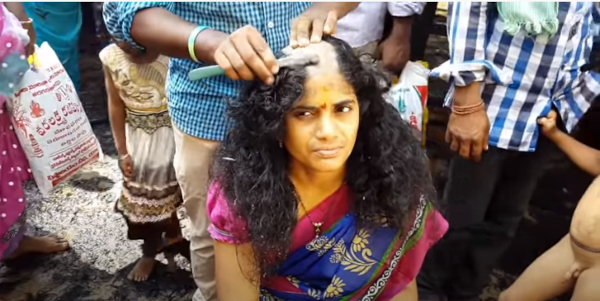Veranda Tales-Walking through the clouds

Storytelling has been an integral part of my life since childhood. I grew up listening to stories during the hot summer evenings and nights with my cousins. Mothers and grandmothers would gather all of us children for story time. It was usually pitch dark except for a very faint light coming from the flickering candle. Power cuts were as frequent as the hot and humid summer days. We all spread out on a cool concrete floor or bamboo mats on the veranda intently listening to fascinating stories about kings, queens, princes, princesses, and peasants alike. Stories about love, life, families, and people entertained and taught us life skills. These stories transported us to distant worlds, strange yet familiar. Often the same story told by two people sounded different as storytellers added new twists and turns adding their personal style and flair to the stories.
Storytelling wasn’t limited to summer evenings and bedtime. I was surrounded by adults who didn’t pass up an opportunity to share their wisdom using the art of storytelling. These rich vibrant oral traditions include songs, poems, stories, and సామెతలు (Sametalu are proverbs in Telugu). Men and women sing songs as they work in the fields, grinding grains and spices and doing other daily chores at their homes. Stories are often used to teach important life lessons, interpersonal skills, and survival skills. These stories and the time spent listening to them made our lives richer leaving an impression on me. This series is all about reliving those memories as I share these stories.
తిరుపతి క్షవరంలాగా (Tirupati kshavaramlaaga)
నాన్న (Nanna is father in Telugu) wanted to become a doctor to follow in the footsteps of his maternal grandfather and maternal uncle. It wasn’t meant to be. The next best option for him was veterinary medicine. He joined the College of Veterinary Sciences, Bapatla which was initially established and was housed in the Agricultural College Bapatla. After completing his first year, the entire school moved to తిరుపతి (Tirupati) changing its name to the College of Veterinary Sciences, Tirupati. It is now known as Sri Venkateswara Veterinary University and still calls తిరుపతి (Tirupati) home. This move took నాన్న (Nanna) from being able to walk to school from his parents place to a place 350 kilometers away from home. A little known fact, it appears, as I recently found out about where నాన్న (Nanna) started his college days.
తిరుపతి (Tirupati) has been a special place for me as I imagined నాన్న (Nanna), a young dashing college student. He played Table Tennis in those days. He told me about an incident where he happened to play against his Professor and beat him. His Professor didn’t like the taste of defeat at the hands of his student. He paid నాన్న (Nanna) back by reducing his grade in a test. I wish I had the opportunity to visit the campus with నాన్న (Nanna). However, I am glad for a memorable vacation I went on with నాన్న (Nanna) and the rest of my family in తిరుపతి (Tirupati) and తిరుమల (Tirumala).
నాన్న (Nanna) managed to reserve a cottage in తిరుమల (Tirumala) for a week. It was hard to find cottages in తిరుమల (Tirumala) back then and it is probably much harder now. We stayed in తిరుపతి (Tirupati) for a day visiting family. The one thing I remember from our stay in తిరుపతి (Tirupati) was a delicious breakfast we had at a small vegetarian restaurant close to the trailhead that climbs up to తిరుమల (Tirumala). I remember a guy going around cleaning tables with a wet towel and ringing the towel into a basin he was carrying. The restaurant was very busy with people’s chatter, clattering of dishes from all around the restaurant and from the kitchen in the back. The guy at the front counter was busy showing people to the tables and handling the cash counter. Waiters were busy bringing plates full of steaming ఇడ్లి (Idli), different varieties of దోస (Dosa - savory crepe), and ఉప్మ (Upma - Savory poridge made out of cream of wheat) served with కొబ్బరి పచ్చడి (kobbari pachadi - coconut chutney) and సాంబారు (Sambar - dal with vegetables and tamarind) from the kitchen to the tables. There was delicious పూరి (Puri - puffed wheat bread) served with బంగాళాదుంప కూర (Bangaladumpa kura - Potato curry). The delicious aroma of all of these foods permeated the restaurant.
నాన్న (Nanna) and I ordered a plate of పూరి (Puri) which was our favorite breakfast. అమ్మ (Amma is mother in Telugu) ordered a plate of two ఇడ్లి (Idli) which is her go to choice when she eats out. She ate plain ఇడ్లి (Idli) without touching the కొబ్బరి పచ్చడి (kobbari pachadi - coconut chutney) as she is allergic to కొబ్బరి (kobbari - coconut). She is also allergic to Peanut oil. So even though she loves పూరి (Puri) she won’t eat it unless she knows for sure it isn’t deep fried in Peanut oil. We filled our tummies with our choice of delicious breakfast and steaming hot South Indian filter coffee.
It was time to get on the trail to start our ascent to తిరుమల (Tirumala) which is at 3200 feet of elevation. There are two foot paths that take you to తిరుమల (Tirumala) from తిరుపతి (Tirupati). These two paths are called Sopanamargas and they pass through seven hills which are part of the Seshachalam Hills. Devotees ritually take these paths to reach తిరుమల (Tirumala) on foot from తిరుపతి (Tirupati). తిరుమల (Tirumala) translates to Holy Mountain.
Alipiri Mettu path is the older of the two and starts at Alipiri. It has a total 3550 Steps with an elevation gain of 2,893 feet. It is the ancient path to the temple.
Srivari Mettu starts at Srinivasa Mangapuram. This path has 2388 steps with an elevation gain of 1,702 feet. It is shorter than Alipiri Mettu path.
In addition to these two foot paths, devotees can travel on a winding 23 kilometers long road in cars and buses. There are dedicated one way roads for up and down trips. I took this road route to తిరుమల (Tirumala) on all my previous visits.
This time around we climbed on foot taking the Alipiri Mettu path. We sent our luggage up by the road. నాన్న (Nanna) corralled all of us. He carried a large flask full of delicious, cold, and refreshing నిమ్మకాయ రసం (Nimmakaya rasam - Limeade). He gave us a cup full of నిమ్మకాయ రసం (Nimmakaya rasam) periodically to keep us going. We went barefoot since wearing shoes on this trail is considered disrespectful. We saw several devotees of all ages, some very old, on the trail chanting the deity’s name, Sri Venkateswara who resides in the temple at the top of the mountain . It was hot and the path wasn’t covered back then. I looked forward to my next cup full of cold నిమ్మకాయ రసం (Nimmakaya rasam. I was thankful for not going with అమ్మ (Amma)’s plan to carry savory మజ్జిగ (Majjiga - buttermilk). I am not a fan of buttermilk. The climb to the top wasn't hard at all. We made it up the mountain in what felt like a short time.
Once we reached the top, we went to our cottage to freshen up. We had a reserved time for దర్శనం (Darshanam - viewing the deity) at the temple after dinner. We completed our దర్శనం (Darshanam) at our designated time with scores of other devotees and pilgrims. After that, we sat on temple grounds with all other devotees enjoying the night views of the temple while we ate a delicious తిరుపతి లడ్డు (Tirupati laddu) which is the traditional ప్రసాదం (Prasadam, consecrated food offered to the deity in a Hindu temple).
When I hear తిరుపతి క్షవరంలాగా (Tirupati kshavaramlaaga) sameta, my mind wanders to the climb to the top and the stay at తిరుమల (Tirumala). This sameta translates to “It is like getting your head shaved at Tirupati). The temple's construction began around 300 AD under the reign of a king of the Pallava dynasty. Records indicate that a Pallava queen, Samavai donated jewels and land to the temple in 966 CE. The temple was consecrated in 1130 AD by the saint Ramanujacharya, a Indian Hindu philosopher, guru, and social reformer. Later the Chola dynasty developed the temple further. In 1517 AD, the Emperor of Vijayanagara Empire, Krishnadevaraya, donated gold and jewels on one of his many visits to the temple, making it possible for the ఆనంద నిలయం (Ananda Nilayam - inner shrine) roofing to be gilded with gold.
Since the start of construction, devotees traveled to తిరుపతి (Tirupati) and తిరుమల (Tirumala) by foot, and on bullock carts before trains, buses and cars came along. Large groups of pilgrims traveled together to తిరుపతి (Tirupati) in bullock cart caravans. They camped at the base of the mountain making the trek up to the top of the mountain over a period of two weeks to a month. Devotees get their heads shaved by barbers as a sign of their devotion either before or after their దర్శనం (Darshanam). As devotees come to get their heads shaved, one of the barbers would add them to the current line of customers. As the barber shaved their heads sequentially one strip at a time, devotees had to sit and wait until the job was complete. Barbers often used blunt knives leaving their customers with scraps and bruises. తిరుపతి క్షవరంలాగా (Tirupati kshavaramlaaga) sameta originated during the time when devotees traveled in groups and stayed for several days in తిరుపతి ( Tirupati). In current times, this sameta is used when someone loses money or belongings when they get taken advantage of by an opportunist.
This negative meaning sameta brings back pleasant memories of my vacation with my family in తిరుమల (Tirumala). It was colder at the top. It was common to see low level clouds. Our rest of the stay at తిరుమల (Tirumala) after the దర్శనం (Darshanam) was reserved for long walks through wispy clouds in the morning and evening. Our cottage was cozy with white walls and blue window panels. We had lunch and dinner at a cafeteria close to our cottage. All vegetarian meals were delicious at the cafeteria. Sadly our trip came to an end. I am happy to report none of us had to endure the తిరుపతి క్షవరం (Tirupati kshavaram), in part because నాన్న (Nanna) was bald and hair on my head was equal to gold for అమ్మ (Amma).

